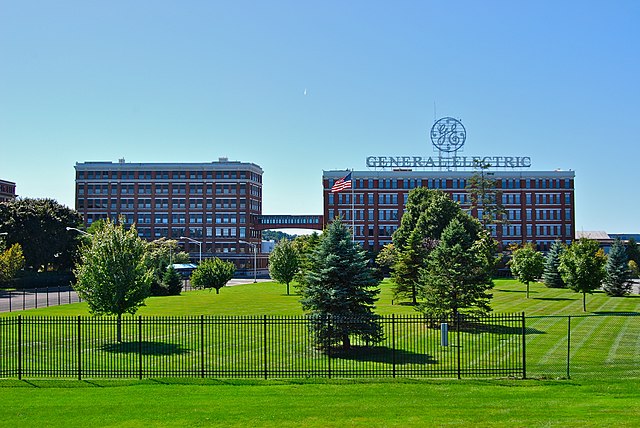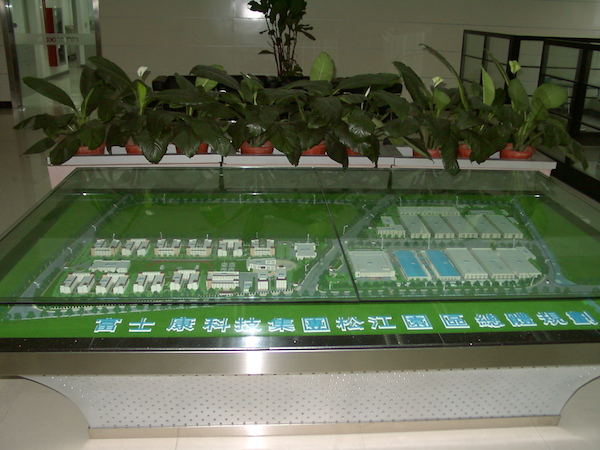posted: September 23, 2022
tl;dr: I think I’ve seen the future of China’s huge electronics factory towns...
I spent most of my years as a child growing up in the suburban outskirts of Schenectady, New York. Schenectady can reasonably lay claim to be the first electronics company town. In 1886 Thomas Edison chose Schenectady for the location of the Edison Machine Works after he outgrew New York City and needed more land. Not too long thereafter Schenectady became the headquarters of the General Electric (GE) company. GE dominated the electronics industry, and Schenectady, in its early years. In the year 2000, although the headquarters was no longer in Schenectady, GE was for a while the most valuable company in the world. I grew up there because my father took a job with the GE Research and Development Center outside of Schenectady, which was quite a desirable place to work in the 1960s.
During my career in the electronics industry I’ve had the opportunity on multiple occasions to travel to mainland China, where the largest modern electronics factories in the world have been built in recent years. I haven’t been to Shenzhen, home of Foxconn City, a factory campus with roughly a quarter million workers, which by itself is several times the population of Schenectady. But I have been to other very large electronics factory complexes in the Shanghai area of China. They dwarf anything ever built in Schenectady or anywhere else in the United States.
So it’s fair to say that I’ve experienced the world’s first electronics company town, and some of its most recent.

Forty years ago there would have been more buildings in this picture
Schenectady was well into its decline phase when I arrived as a boy. Schenectady’s population peaked in the 1930 U.S. census and was declining the entire time that I lived there. GE had already relocated the headquarters, and the company was building new factories and operations in other states, especially those with right-to-work laws. It was also expanding in other countries, and the nearest commercial airport to Schenectady, Albany County Airport, barely qualified as an international airport.
None of this really mattered to me: it was a great place to grow up as a kid, as long as your parents had stable employment and income. My parents bought a home in a middle class suburban housing development, one street away from the woods and a place called “the glider field” that was supposed to have been used to land small planes in the past. Because there was no economic growth in the area, the housing development never expanded to make use of this land. It was left to us kids to use as we wanted, and to a neighbor who marked miles of trails for cross-country skiing in the winter. After a good snow I could walk out of the house, click into my skis, and go for miles. We’d ride bikes everywhere, in the woods and in town. Traffic was not much of an issue at all, nor was school overcrowding. Not until later in my adolescence would I want a job. Looking around at that point of my life, it was pretty clear to me that better opportunities lay elsewhere.

A model of Foxconn's Songjiang, China campus in 2007: I wonder how long these buildings will last?
I was last back in Schenectady in 2004. My overall impression then was one of sadness. While there are always people with plans to revitalize the city, nothing seems to work. The one major new office building that I saw downtown was a New York State lottery building. The lottery is not an economic engine for growth: it is a less-than-zero-sum game that gets most of its money from the “mathematically challenged” and folks who are desperate. Schenectady is not too far from Albany, where many state office buildings are: perhaps the folks in Albany felt sorry for Schenectady, and gave them the state’s lottery building.
The Schenectady skyline was smaller than it used to be. The CEOs who followed Neutron Jack noticed that he left behind some nearly-empty buildings, so they took steps to get rid of them. No manufacturing company today builds 8-to-10-story brick factory buildings with lots of windows: it is too expensive to heat and cool, and too hard to move equipment and products between floors. The story I heard at the time was that GE had vacated some of their buildings and then asked the city to remove them from the property tax rolls. The city declined to do so, because the tax on the buildings was a major portion of the city’s budget. So GE literally knocked down a good fraction of the skyline of Schenectady to save on property tax.
Will this happen someday in those brand new electronics towns in China? I think it is inevitable. Any structures built reflect the needs of the present and the forecastable future. It is hard to look ahead decades to see how markets, technology, human needs, and political institutions will change. All that is certain is that they will change. The older I get, the more I believe in cyclical views of history. I think I know what is coming to China, someday.